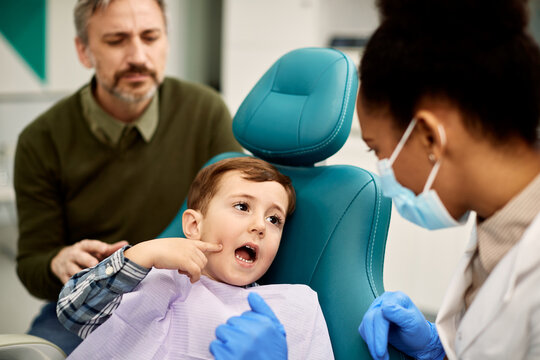Tooth pain is often an unsettling experience for children and their caregivers. While some cases may be managed with at-home care, others may require more urgent attention from a dental professional. Understanding when to seek emergency dental care for your child can help prevent potential complications and promote better oral health.
Recognizing Signs of Dental Issues Requiring Immediate Attention
Certain symptoms may indicate that your child needs emergency dental care. Here are some key signs to watch for:
- Persistent or severe tooth pain: Pain that interferes with eating, sleeping, or daily activities may suggest underlying issues like an infection or deep cavity.
- Swelling in the gums, face, or jaw: This may indicate an abscess, a serious bacterial infection that needs treatment to prevent it from spreading. Look for additional signs such as fever, a bad taste in the mouth, or visibly swollen areas around the affected tooth
- Visible damage to teeth: Cracked, chipped, or knocked-out teeth from accidents or sports injuries can expose nerves and lead to further damage if not treated immediately.
Addressing these issues promptly can help preserve your child’s dental health and prevent further complications.
Managing Dental Injuries at Home Before Professional Care
While waiting to see a dentist, there are several steps parents can take to manage their child’s discomfort and protect the injured area. Over-the-counter pain relievers may help alleviate pain, providing some relief. Keep the affected area clean—gently rinse your child’s mouth with warm salt water to remove debris and reduce bacteria. To ease swelling or discomfort, applying a cold compress to the outside of the cheek can help reduce inflammation. If a tooth has been knocked out, locate it carefully, handling it by the crown rather than the roots. Rinse the tooth gently to remove any dirt and bring it to the dentist as soon as possible.
Seeking Emergency Dental Care
Contact your pediatric dentist or an emergency dental clinic promptly if symptoms persist, worsen, or indicate an infection. The following scenarios typically warrant immediate care:
- Tooth pain accompanied by fever, swelling, or redness in the gums or face
- An untreated abscess or visible signs of pus around the tooth or gums
- A tooth that has been knocked out or sustained significant trauma
- Significant bleeding after an injury that does not stop with gentle pressure
- Persistent or severe pain that impacts daily activities
It is beneficial to have access to an emergency dental clinic or after-hours contact information for your child’s dentist. This help you get professional advice and timely care when needed.
Creating a Plan for Your Child’s Dental Emergencies
Preparation can make a stressful situation more manageable. Having a dental first aid kit at home, including items like gauze, a small container, and dental wax, can help address issues while waiting for professional care. Educating children about proper dental hygiene and encouraging the use of mouthguards during sports or physical activities reduces the risk of some injuries. Routine dental visits are valuable and allow your pediatric dentist to detect potential issues before they escalate. Early interventions often prevent the need for emergency care.
Managing Tooth Pain in Children
Tooth pain in children ranges from minor discomfort to symptoms that require prompt attention. Watching for signs of infection, persistent pain, or visible damage helps determine when emergency care is necessary. If you are uncertain, contact your pediatric dentist for guidance. By remaining vigilant and prepared, caregivers can take proactive steps to protect their child’s dental health.

